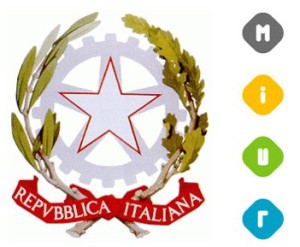A Comprehensive Crypto Trading Asset List – Your Guide to Investing

A Comprehensive Crypto Trading Asset List
In the rapidly evolving world of cryptocurrency, having a reliable Crypto Trading Asset List visit website that details various trading assets is essential for both beginners and seasoned investors. This article will provide a comprehensive list of trading assets within the crypto space, strategies for effective trading, and insights on navigating this complex ecosystem.
Understanding Crypto Trading Assets
Crypto trading assets refer to the various digital currencies and tokens that can be bought, sold, or traded within the cryptocurrency market. These assets are often categorized by their purpose, underlying technology, and market performance. As the market grows, the list of available assets expands, and understanding these different categories is crucial for making informed investment decisions.
Categories of Crypto Assets
- Cryptocurrencies: These are digital currencies that function independently of a central authority. Bitcoin (BTC) and Ethereum (ETH) are the most well-known examples.
- Stablecoins: These are designed to maintain a stable value against a fiat currency. Examples include Tether (USDT) and USD Coin (USDC).
- Tokens: Often built on existing blockchains, tokens can serve various purposes like utility, security, or governance. Examples are Chainlink (LINK) and Uniswap (UNI).
- DeFi Assets: Decentralized Finance (DeFi) assets are associated with protocols that aim to replicate traditional financial systems. Examples include Aave (AAVE) and Compound (COMP).
- NFTs: Non-fungible tokens are unique digital assets verified using blockchain technology, primarily used for digital art and collectibles. Examples include CryptoPunks and Bored Ape Yacht Club.
Popular Crypto Trading Assets
Here we will list some of the most popular and traded cryptocurrencies in the market today:
- Bitcoin (BTC): The first and most well-known cryptocurrency, often referred to as digital gold.
- Ethereum (ETH): Known for its smart contract functionality, Ethereum has become a foundational blockchain for various DeFi projects and NFTs.
- Binance Coin (BNB): Initially created as a utility token for the Binance exchange, BNB has evolved to support a range of applications.
- Cardano (ADA): Known for its research-based approach to blockchain technology, Cardano has been gaining traction within the crypto community.
- Solana (SOL): Famous for its high throughput and low transaction costs, Solana has emerged as a valuable platform for DeFi applications.
- XRP (Ripple): XRP aims to facilitate international transactions and is commonly used in cross-border payment systems.
- Polkadot (DOT): This platform enables different blockchains to transfer information and value in a trustless manner.
- Chainlink (LINK): A decentralized oracle network that allows smart contracts on Ethereum to interact with real-world data.
- Litecoin (LTC): Often referred to as the silver to Bitcoin’s gold, Litecoin offers faster transaction times and lower fees.
- Tezos (XTZ): A blockchain that allows for self-amending protocols and on-chain governance.

Choosing the Right Trading Platform
Once you identify which assets to trade, choosing an appropriate trading platform is essential. Here’s what to consider:
- Security: Ensure the platform has strong security measures in place, such as two-factor authentication and cold storage for assets.
- User Interface: A user-friendly interface is important for both beginners and veterans who want efficiency in trading.
- Fees: Review the trading fees associated with buying and selling specific assets.
- Liquidity: Higher liquidity means smoother transactions and less price manipulation.
- Customer Support: Reliable customer support can be crucial when encountering issues during trading.
Trading Strategies for Success
Investing in cryptocurrencies can be profitable, but it’s essential to have a well-thought-out strategy:
- Buy and Hold: Also known as HODLing, this strategy involves purchasing assets and holding onto them for the long term.
- Day Trading: This strategy involves buying and selling assets within the same day, taking advantage of price fluctuations.
- Swing Trading: This approach involves holding onto assets for several days or weeks to capitalize on expected price moves.
- Scalping: Traders make numerous small trades throughout the day to profit from tiny price changes.
- Dollar-Cost Averaging: Invest a fixed amount of money regularly, regardless of the asset price, to reduce the impact of market volatility.
Staying Informed: Key Resources
Investing in cryptocurrency requires constant learning and awareness of market trends. Here are some resources to help you stay informed:
- News Aggregators: Websites like CoinDesk, CoinTelegraph, and CryptoSlate provide the latest news and analysis.
- Trading Tools: Consider using platforms like TradingView for charting and analysis.
- Social Media: Follow crypto influencers on Twitter, Reddit, and Telegram for real-time insights.
- Podcasts and YouTube Channels: There are numerous content creators who provide valuable market insights and trading advice.
Conclusion
The world of crypto trading is dynamic and filled with opportunities. By utilizing a comprehensive Crypto Trading Asset List, understanding the market landscape, choosing the right platforms, and employing effective trading strategies, you can significantly enhance your investment potential. Always remember to do thorough research and keep abreast of market trends to make informed decisions.






















